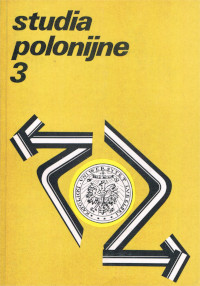Polish Pastoral Care Abroad as Seen by the Laity. Their Hopes and Expectations
Main Article Content
Abstract
Religious antagonisms between the English and the Irish transferred to the United States resulted in a development of a movement initiated by the Irish which aimed to create a uniform Catholic power uniting Roman Catholics of various descend settled in America against Anglo-Saxon Protestants. How this was' to be accomplished is proposed by the so-called „Gibons’ theory” which advocated depriving particular ethnic groups of their specific religious, cultural and national values suppressed by the Irish type of religiosity. The action provoked the resistance of Polish immigrants and some of them found the Polish Catholic Church.
These facts determined the nature of Polish pastoral care in the U. S. A. It sank into routine, did not develop or try improve its intellectual level.
The Second Vatican Council offered a chance of changing the situation of Polish parishes since it encouraged greater involvement of the laity. This chance has been partly wasted due to the growing territorial dispersal of Polish Americans in big cities (e. g. Detroit), slinght involvement of the American intelligentsia of Polish origin in pastoral work and lack of teachers of the Polish language at parish schools.
Hopes of improving the present situation of Polish parishes in the U. S. A. are held out in connection with the activities of visiting Polish priests, Society of Christ in particular, possibility of preserving forms of pastoral care typical of the Poles, an direct subjection to the Roman Congregation. The Committee for Religious Affairs set up by the Polish-American Congress might also change a lot.
The necessity of introducing changes into the pastoral care of Polish Americans has been recognized by the laity. This is revealed in several postulates they put forward at the Synod of the Archdiocese of Detroit and which have since become a subject of discussion among Polish Americans.

